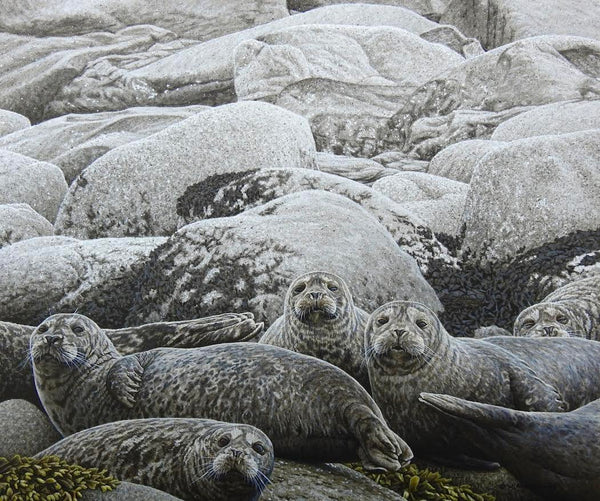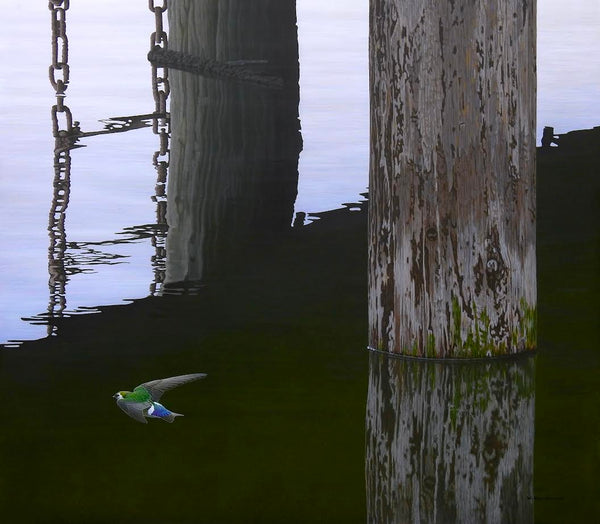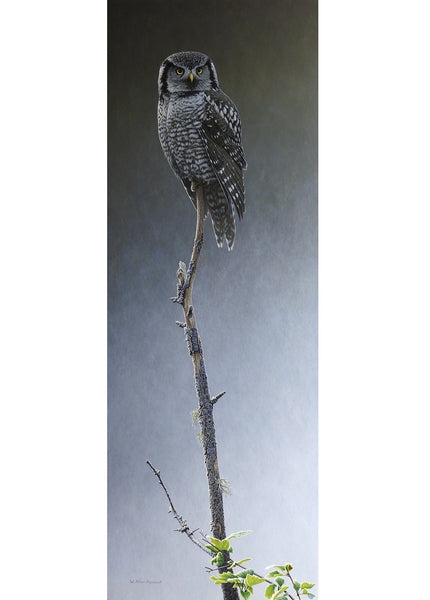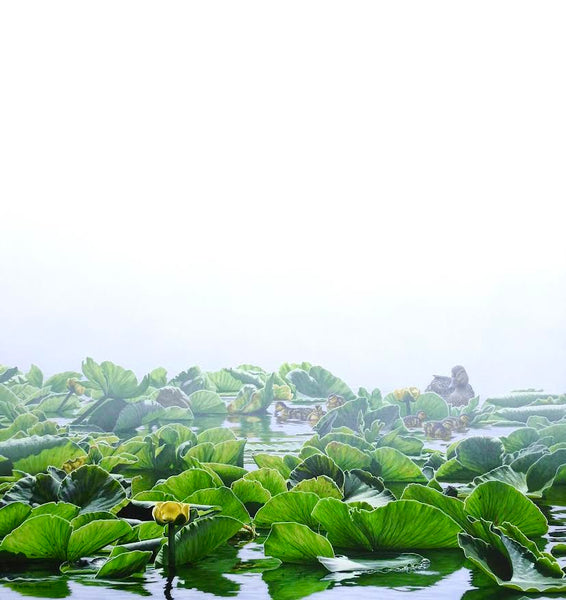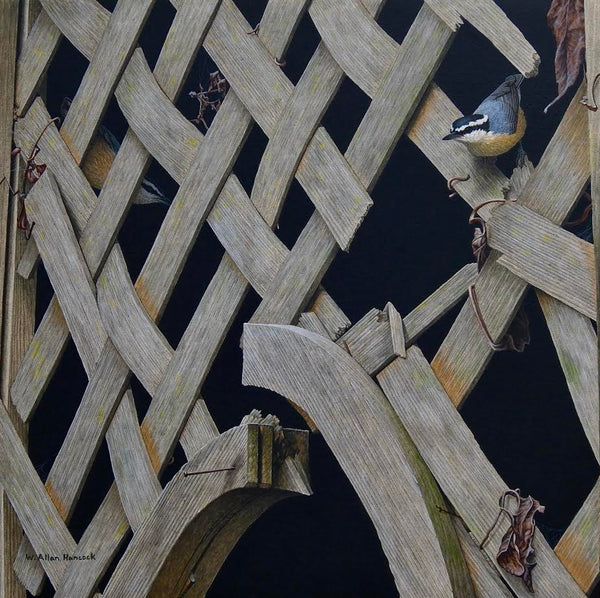W. Allan Hancock
Please click here to be added to W. Allan Hancock's special interest list.
Then 12-year-old W Allan Hancock received a paint-by-numbers kit in 1980. It was a gift from his grandparents. Allan latched on, but it wasn’t to the templated scene inside the kit. He latched onto just the paints, which he used for creations all his own. His choice of subject-matter was the wildlife that he had held in awe for as long as he could remember.
Art had always been – and remains – his great calling. His parents remember a little boy sprawled out on the floor, drawing and colouring for hours on end. In high school, it was art-related classes which earned him a place (his only place!) on the Honour Roll. In university, though, art-related studies were unfulfilling, a sure sign that the formal, academic side of art wasn’t in his wheelhouse.
On the practical side, Allan gained his first career foothold in art by accepting a job with a greeting card company in 1989. He painted watercolours of wildlife, 9-to-5 in a commercial studio space. It was glorious, but the company folded a few years later. Allan turned to full-time shift work at Robin Hood Flour Mill where he had previously worked summers. During that period, he was painting part-time and achieving sales at a Saskatoon gallery. He also succeeded in having pieces selected for limited edition prints released by Ducks Unlimited Canada and other organizations.
Satisfaction with the Robin Hood job dwindled as public interest in his artwork increased, so in 1995 Allan decided to forsake the steady paycheque and to pursue art full-time. He sold his house and car and moved to Vancouver Island, pulled by its abundance of art festivals and wildlife. He reasoned that down the road, he would rather say “I gave it my best shot” than regret the path not taken.
He has never looked back. In forging his own unique approach over the years, Allan feels gratitude for many fellow artists. Especially important in his childhood were Glen Loates and Leon Parson, the latter featured in his grandfather’s Field & Stream magazines. During his youth, Robert Bateman, Fenwick Lansdowne, Roger Tory Peterson and George McLean figured large. In adulthood, it was Ray Harris Ching and Gustave Caillebotte.
Through it all, gratitude rings daily in his heart. He is honoured and grateful that people purchase his work and embrace it in their lives; that the Royal Canadian Mint has featured his work on multiple coins; that his work was chosen for the book cover of Witness: Selected Poems by award-winning Canadian author/poet Patrick Lane, and for prominent inclusion in the book Amazing Animals by Margriet Ruurs; that Her Imperial Highness Princess Takamado of Japan has one of his paintings in her collection; and for much, much else. He is grateful each day for the love and bedrock support of his wife Taryn and their children Ezra and Sage and for the home they have made together on Salt Spring Island. He was grateful and humbled to receive a postcard in 2011 from the great Robert Bateman himself expressing admiration and stating: “You have a very strong and unique style – easily recognized yet accurate and full of vitality.”
Through it all, Allan has richly experienced the worlds inhabited by the creatures he paints: the lakes, rivers and woodlands of Ontario, Saskatchewan and British Columbia. Frequent family moves during his childhood and youth enabled countless field trips into the outdoors. The natural world became imprinted on his heart early, and deeply.
That’s not to say that the human world is absent from his work. Window casings, doorways, weathered siding, rusted metal fixtures, and other objects appear with regularity. As a mature artist, Allan deploys these man-made elements with great care for design purposes. But it’s not just stagecraft. These details are also echoes reverberating from his outdoor immersions which have included poking around abandoned homesteads and old barns or venturing by canoe to Grey Owl’s cabin. He is keenly aware of the footprint of humanity on nature and the complex inter-weaving of the two.
Go back to that paint-by-numbers kit of long ago. Talk about a quintessentially human artifact. Each of its components is man-made and it prescribes a 2D Lego-like construction. Yet inside the mechanistic humanness of the kit is a portal to the natural world: the paints themselves, with their infinite potential. The paints, as applied to a surface, by brushes guided by the hand and a mind and a heart steeped in nature, give nature a powerful voice. Here is the human world expressing nature in a way that never occurred to her over billions of years until artists came along to show her the way.
The 12-year-old Allan likely wouldn’t have articulated it this way. On receiving his grandparents’ gift, his reaction was probably: “Cool, I can make a raccoon from this!” He already had a clear compass direction at that time, and he knew where his creativity wanted to go. It was always like this, and has been ever since. It’s a joyful journey. – written by Peter Segnitz (2020)
